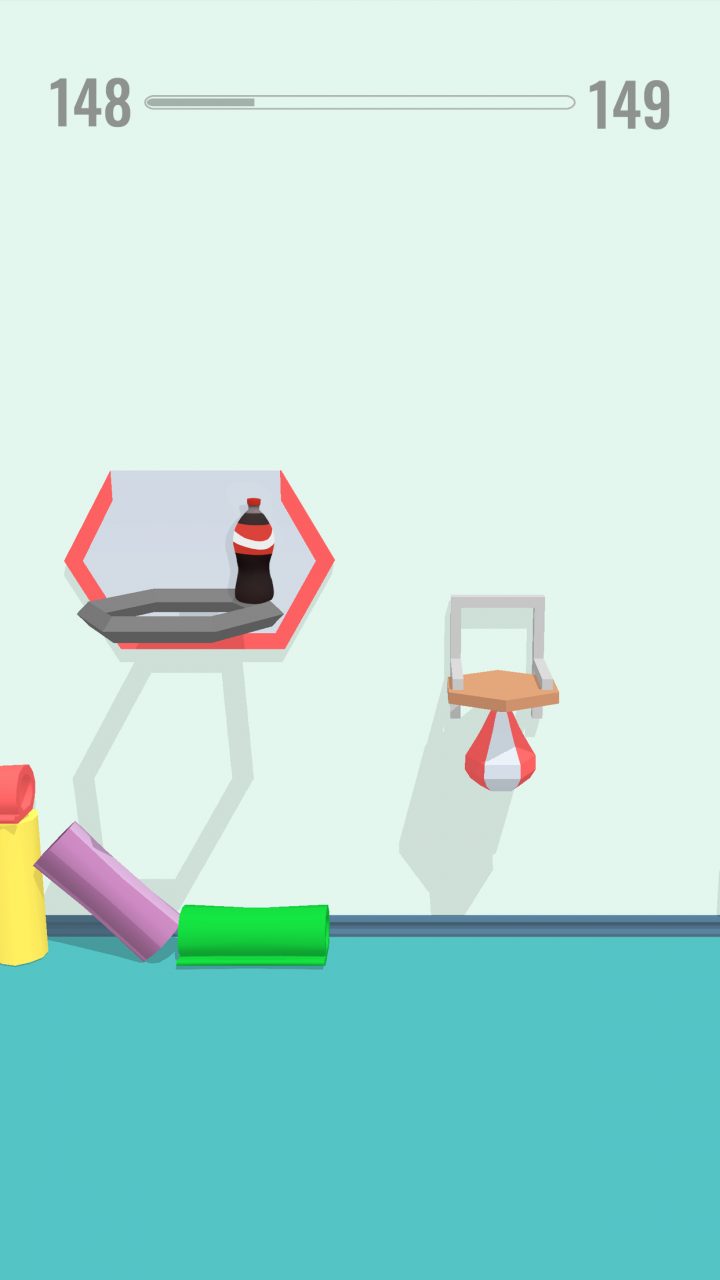Long-term operation of a hypercasual project
Bottle Jump was released six years ago and remains successful, with over 230 million installs and ongoing development. At the start, its metrics weren’t impressive, but it’s now clear that it’s more profitable to nurture an existing hit than to chase new ones. This mindset wasn’t popular in the hypercasual genre at the time.
Today, Bottle Jump is one of the top games in Azur Games’ portfolio, consistently generating up to $2 million annually.
In the past, hypercasual games were thought to last only 1-2 years, with little to no development post-launch. Projects would often be abandoned once they stopped generating revenue, with studios moving on to new prototypes while the project was still relevant. However, we aimed to accumulate expertise, not just launch projects, but also improve metrics, identify growth points, and manage long-term operations.
Instead of abandoning it when all metrics dictated so, we developed Bottle Jump further, and it has lived on for over six years, continuing to grow.
In terms of long-term strategy for hypercasual games, many evolve toward a hybrid model, adding layers of depth to core mechanics over time.
Some things we tried:
- Building a room using secondary currency.
- Collecting additional items (coins) on levels.
- “Life” and “energy” mechanics for the bottle.
- Session limits.
- Customization options for the bottle and flight trails.
- Pop culture references.
- Drawing on the bottle with a marker (among newer features) and more.
Not all these experiments made it to the current version, but our constant cycle of testing and iteration never stops. It’s important to note that after so many years, we’re not searching for a single idea to boost retention by 10%, but rather focusing on 10 smaller changes that together improve metrics by 2%.
We’ve identified our audience, so making major changes when a project is profitable is risky. This is a key point when transitioning from hypercasual to hybrid. Many players are devoted to the classic hypercasual style of “quick in, fun time, and out in a few days.” If the gameplay becomes too complex, it might alienate this type of audience, and there’s no guarantee new players will stick around.
There are two approaches:
- Roll out supportive updates. These gradual changes develop the gameplay without any sharp boosts but ensure long-term profits.
- Make radical core changes by adding casual mechanics to the game to increase IAPs, but this could cause a significant drop in LTV. This route is only worth pursuing if you’re confident it will work or if it’s your last chance to revive the project.
Long-term management of a hypercasual title means constant testing and analytics. Bottle Jump has been iterated for years, whereas competitors didn’t fine-tune their games as much. The result is that the project reached the top in both installs and revenue.
We’ve never had updates that gave a 20% boost at once. Instead, we did dozens of iterations that cumulatively resulted in +2-3%. Ten such updates each year lead to long-term success, allowing us to reach a wider audience, buy more traffic, and ultimately earn more.
The first 10 levels were meticulously polished, down to every step and bottle flip. This allowed us to shape the early funnel to our ideal outcome.
For example, on a level with a low win rate and frequent user drop-offs, we study where players typically failed. We then beat the level ourselves and manually tweak the level design down to the pixel level. These small changes result in incremental improvements to the game.

A significant part of Bottle Jump’s updates has been driven by the need to add more analytics, giving us a deeper understanding of user behavior.
Using SDK configs has been especially helpful, allowing us to test hypotheses by just switching between builds without constantly uploading new ones. We could experiment with ad timings, for instance, with minimal fuss.
This approach applies to marketing creatives, ASO, and other areas as well. Even after six years, we still test around 10 new creatives for Bottle Jump every month.
Is it worth it?
Young studios sometimes think that it’s better to create new projects to find a hit rather than spend six years on an existing game that only slightly improves metrics with each update.
Five years ago, this might’ve worked. Back then, a prototype with a single core mechanic and 15 minutes of gameplay could be built in a few days to a few weeks, and it would be enough. Today, new projects need to be polished from the start, with at least 40 minutes of content and a sense of completeness. This means months of development with no guaranteed success but high costs to keep the studio running.
Testing individual mechanics isn’t enough anymore. Even if a prototype shows promise, there’s no assurance it can be refined into a fully-fledged, monetizable game.
In the end, developing a project that’s already generating revenue is far more profitable and realistic than chasing the next hit. If you have resources for experimentation and separate development teams, that’s great. But even then, having a long-term project that brings stable profits while you work on new ideas is the smarter play.
